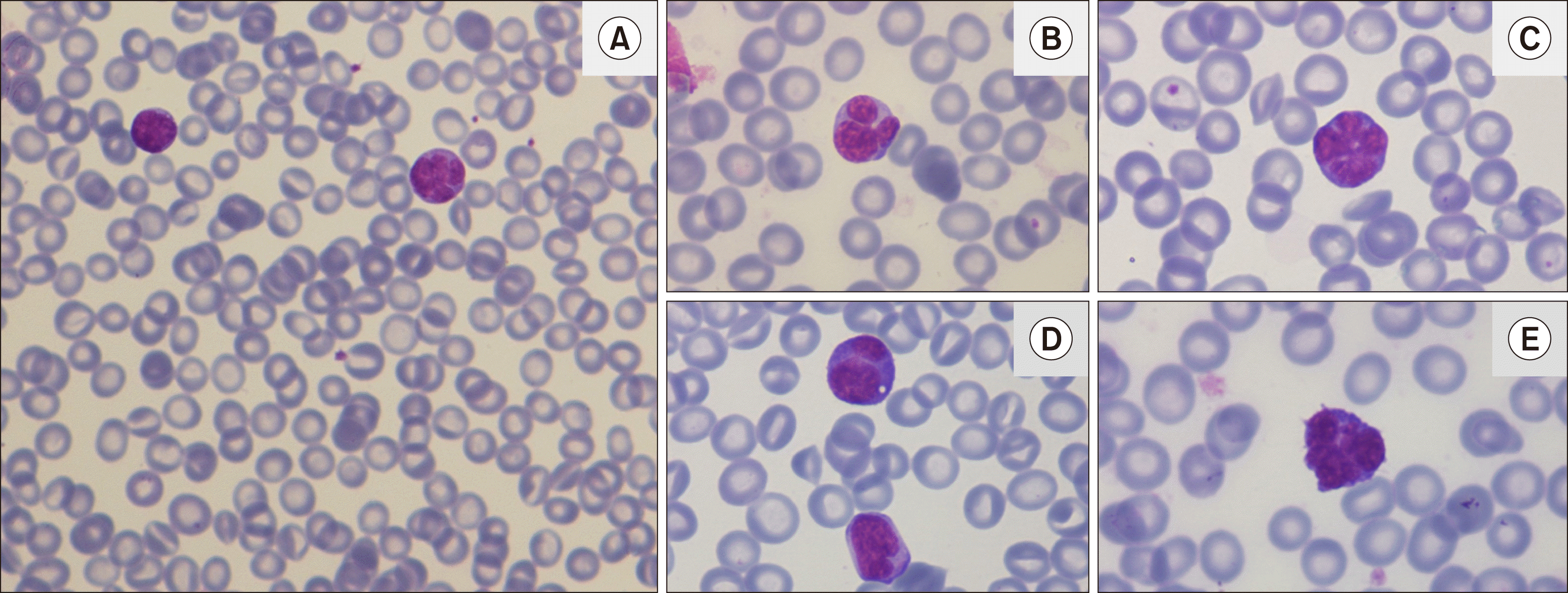A 53-year-old man presented with weight loss and lymphadenopathies. Following were the blood-work findings: hemoglobin 109 g/L, platelets 63×109/L, leukocytes 18.9×109/L, and lactate dehydrogenase 1,784 U/L. Peripheral blood film showed 22% of medium-sized atypical lymphocytes with flower-shaped nuclei, resembling adult T-cell lymphoma lymphocytes (A–E). Flow cytometry displayed a 25% lambda clonal lymphocytes CD19+, CD20+, CD22+, CD5+, CD10-, CD23-, CD200+, CD38+, CD25+, CD11c-, CD123-, and TdT-. Positron emission tomography/computed tomography revealed multiple hypermetabolic lymph nodes and captation in bone and spleen. Lymph node biopsy revealed a massive lymphocytic infiltrate positive for CD20, CD5, MUM1, FOXP1, BCL2, and MYC; negative for CD10, CyclinD1, SOX11, CD30, and EBER; with ki67 90%. Fluorence in situ hybridization targeting BCL6, BLC2 and MYC were negative. Bone marrow was infiltrated by lymphoma and the cytogenetic analysis showed a complex karyotype and TP53 deletion. Diffuse large B-cell lymphoma (DLBCL) non-germinal-center CD5+ double expresser was diagnosed.
CD5+ DLBCL is an uncommon subtype (5–10%) associated with older age-groups, extra-nodal involvement, inferior response to rituximab containing regimens, and poor prognosis.
Leukemic presentation of DLBCL is rare. Peripheral blood smear may be useful to screen it, being sometimes difficult to distinguish from other hemopathies. Although cytometry is a rapid testing tool in this cases, the final diagnosis should be made by biopsy including cytogenetic analysis.




 PDF
PDF Citation
Citation Print
Print



 XML Download
XML Download